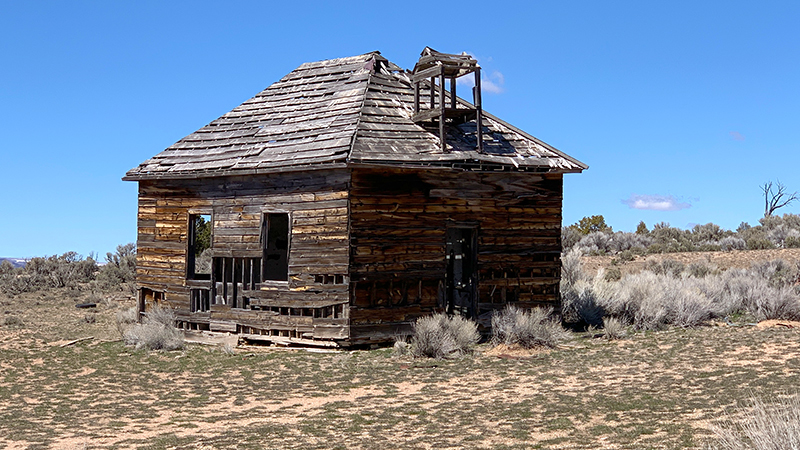
When it comes to abandoned, creepy, old, crumbling buildings, I am like a moth to a flame. I love them and the potential stories they hold. I love stepping inside a doorway, getting a glimpse of history, and imagining what type of life happened in that exact spot at one point in history. I love ghost towns for the exact same reason. There isn’t anything quite like standing in the middle of a dirt road, with decrepit buildings on each side of street, hinting of stories of love, crime, shootouts, drama, theater, and commerce.
Any time I have an opportunity to work a ghost town visit into a road trip, I take it. We’ve had a blast exploring ghost towns like Terlingua, Shaniko, Leadfield, Rhyolite, Shasta, and Aguereberry Camp.
During our visit to Bryce Canyon National Park, I was so excited to get the chance to visit the ghost town of Widtsoe, but ultimately was disappointed because it’s not an actual ghost town.
All that is left of the Widtsoe ghost town is a few homes, the church/school building, and the cemetery. The few old wooden buildings left are on private land, which means they are far behind fences, hard to find, and difficult to see. The only building we could check out up close was the church/school building.
So Widtsoe isn’t really a ghost town as much as a single old building.
The History Of Widtsoe
Originally known as Adairville, the town of Widtsoe, Utah was settled in the early 1900s by ‘dry’ farmer Jedediah Adair.
By 1912 the community had two hotels, four stores, a post office, sawmills, a confectionery plant, and a church meetinghouse that was also used as a school. In 1915 water was piped from a local spring to the town. Over the years, the town was renamed Houston, then Winder, then in 1917, it was named Widtsoe to honor University of Utah president John A. Widtsoe. By 1919, with the relocation of the US Forest Service’s district office to Widtsoe, the community had around 1,100 residents.
In 1920, threat of drought began to drive farmers out of Widtsoe. The harsh conditions took its toll, and as crops failed, the US Forest Service left Widtsoe, and the population declined until only a few dozen families were left. In 1936 the Federal Resettlement Administration bought out the remaining landowners, tore down most buildings, and the last residents left Widtsoe for good in 1938.
Know Before You Go
- The Widtsoe Ghost Town is located in John’s Valley, about 16 miles northeast of Bryce Canyon National Park on Highway 22 in Garfield County, Utah 84712.
- Only a few homes, the church and school building, and the cemetery remain today. What’s left is owned by private landowners, the State of Utah, and the federal government.
- There really isn’t much to see. This was a bit of a let down and not worth our drive.





